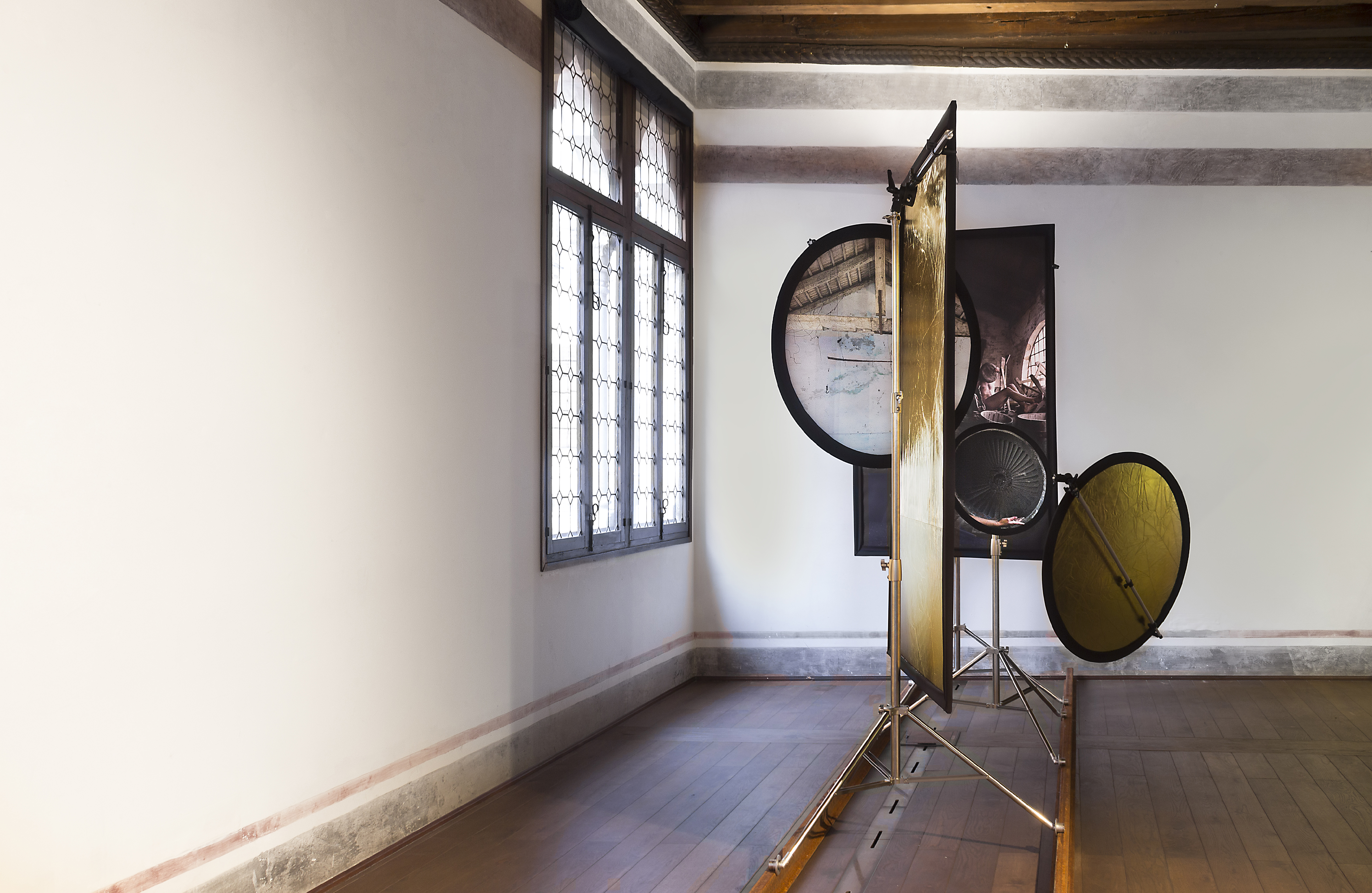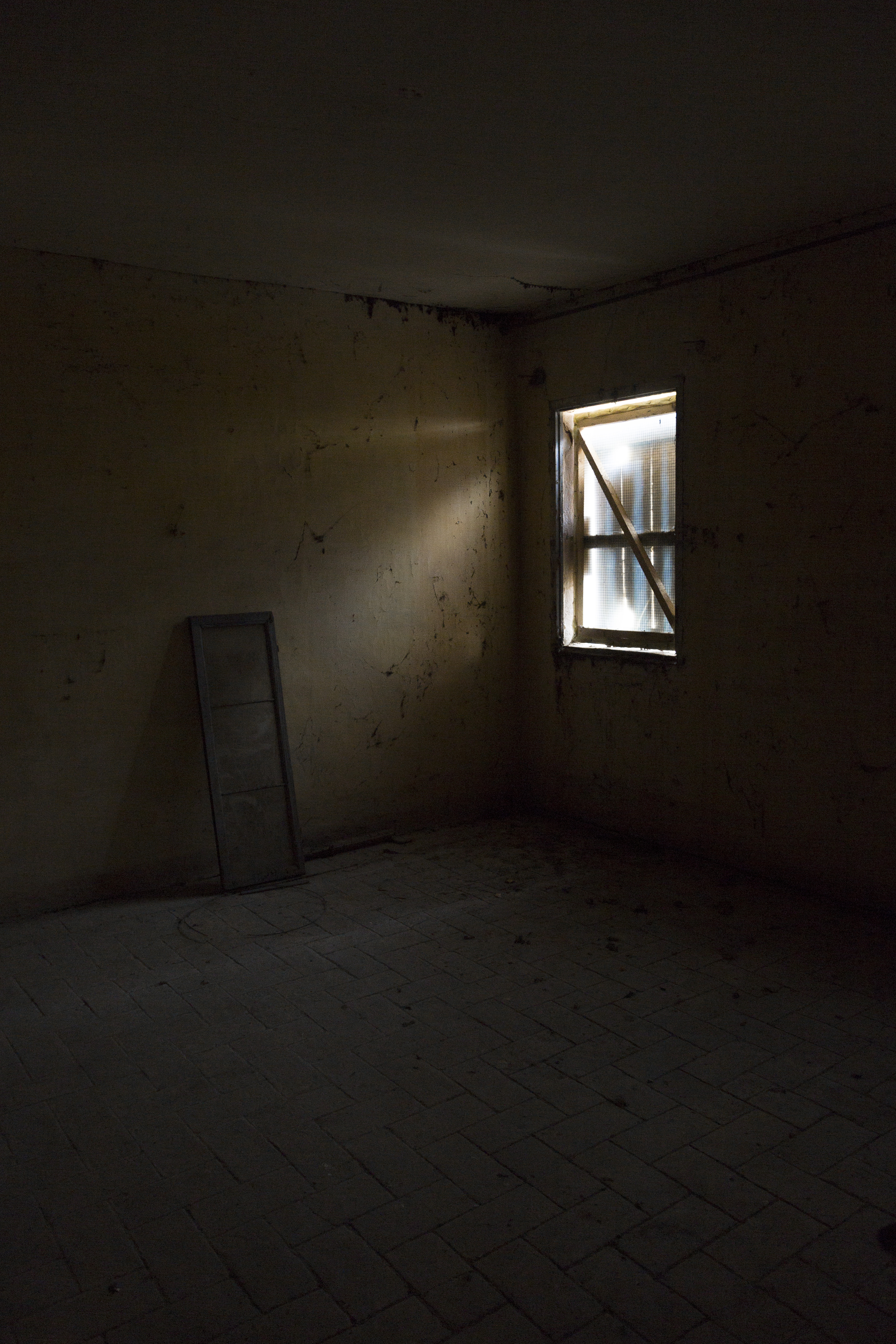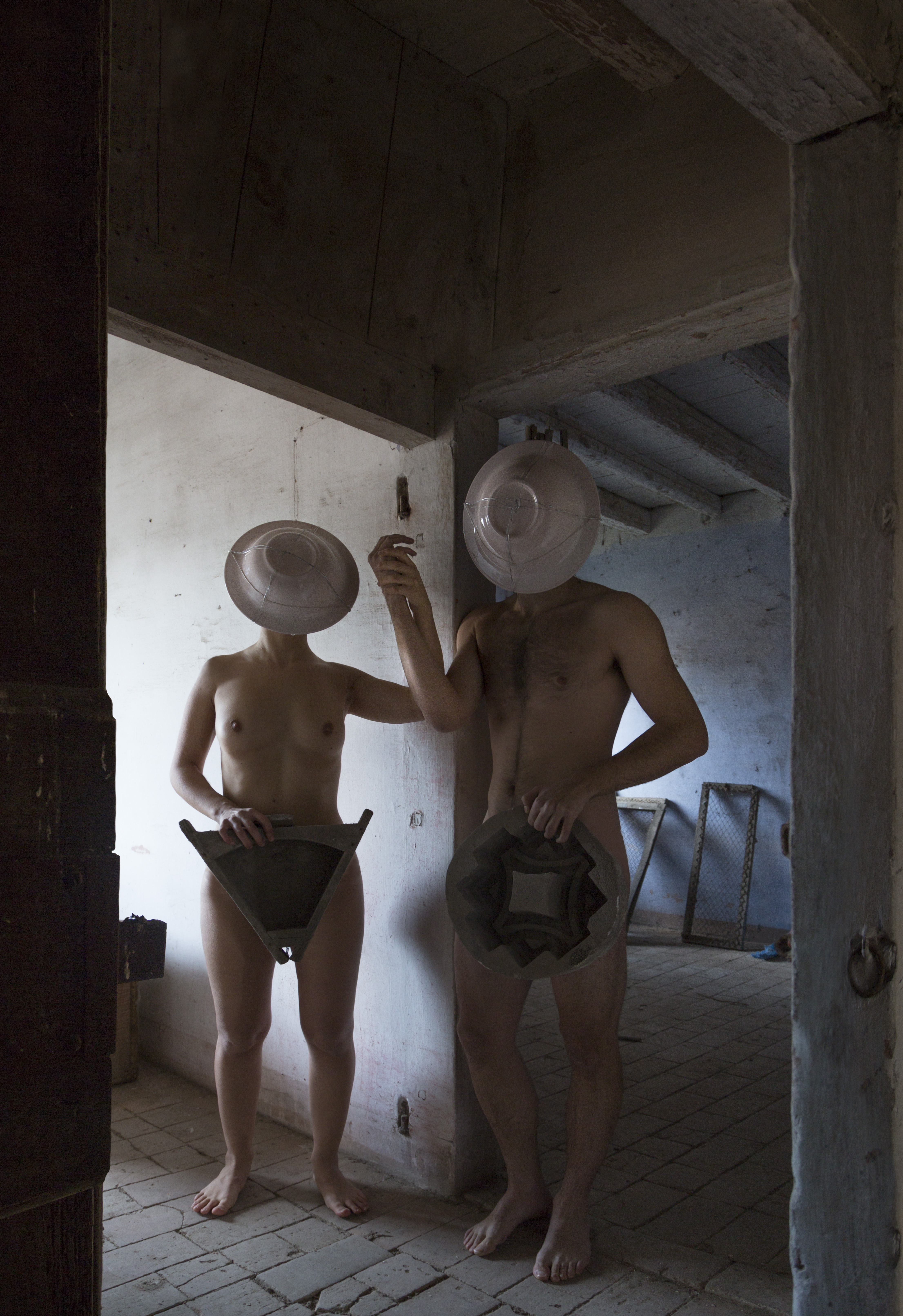
A FUOCO CONTINUO, 2018
Print on retroreflective pvc, stand unit, photographic studio umbrella
Ø 184 cm _Photo courtesy the artist
Print on retroreflective pvc, stand unit, photographic studio umbrella
Ø 184 cm _Photo courtesy the artist



A FUOCO CONTINUO, 2018
Photographyc print on hahnemühle canvas, triflector stand unit, gold/silver reflector
Tript. Ø 100, 100, 50 cm _Photo courtesy the artist
Photographyc print on hahnemühle canvas, triflector stand unit, gold/silver reflector
Tript. Ø 100, 100, 50 cm _Photo courtesy the artist


A FUOCO CONTINUO, 2018
Photographic print on hahnemühle canvas, stand unit, silver reflector
108 × 165 cm _Photo courtesy the artist
Photographic print on hahnemühle canvas, stand unit, silver reflector
108 × 165 cm _Photo courtesy the artist

A FUOCO CONTINUO, 2018
Photographic print on hahnemühle canvas, stand unit, silver reflector
80 × 120 cm _Photo courtesy the artist
Photographic print on hahnemühle canvas, stand unit, silver reflector
80 × 120 cm _Photo courtesy the artist

A FUOCO CONTINUO, 2018
Photographic print on hahnemühle paper
37 × 25 cm _Photo courtesy the artist
Photographic print on hahnemühle paper
37 × 25 cm _Photo courtesy the artist

A FUOCO CONTINUO, 2018
Ink on paper
25×32 cm each and 43×32 cm _Photo courtesy the artist
Ink on paper
25×32 cm each and 43×32 cm _Photo courtesy the artist











A FUOCO CONTINUO,
2018
The Continuous Fire project was born in the shadow of the story of Gregorio Gregorj, owner of the homonymous kiln in Sant’Antonino (province of Treviso) between the 19th and 20th centuries; nowadays in completely abandoned conditions. The utopian and unsuccessful operation of recreating the Hall of Artists today - the beating heart of the building which connected art, industrial production, and social progress - is conducted through the investigation of the traces of "the dark kilnsman", as Gregorj liked to call himself. Reactivated through the process of work and memory thanks to two dedicated workshops, the building is then investigated through a series of photographic shots in order to recover suggestions, presences and suspended temporalities, composing a single dynamic installation in the exhibition space.
_
Il progetto A fuoco continuonasce all’ombra della storia di Gregorio Gregorj, alla guida dell’omonima fornace di Sant’Antonino (Treviso) tra XIX e XX secolo; oggi il sito è in stato d’abbandono. L’operazione, utopistica e fallimentare, di ricreare oggi la Sala degli Artisti - cuore pulsante del complesso che univa arte, produzione industriale, progresso sociale - è condotta attraverso l’indagine delle tracce “dell’oscuro fornaciaio”, come amava definirsi lo stesso Gregorj. Riattivato attraverso il processo del lavoro e della memoria, grazie a due workshop dedicati, il complesso viene quindi indagato attraverso una serie di scatti fotografici recuperando suggestioni, presenze e temporalità sospese, andando a comporre un’unica installazione dinamica nello spazio espositivo.